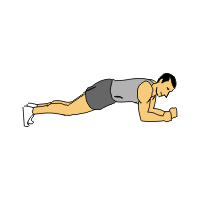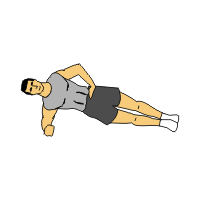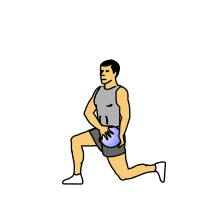Core Strength Training For Athletic Performance
The muscles of the trunk and torso act to stabilize the spine, pelvis and shoulder girdle. From this solid, balanced base the limbs can be moved powerfully and under control. In fact before rapid movements of the extremities can take place, the central nervous system stabilizes the spine in anticipation (1). The rate at which the core muscles stabilize the spine may have a direct effect on the power of limb movement (2). Core strength training differs from many traditional weight training routines by working both the lower back and abdominals in unison. The same is true for the upper and lower body. All athletic movements incorporate the core in some way. Very few muscle groups are isolated. Instead the whole body works as a unit and core strength training endeavours to replicate this. What are the benefits of core strength training to the athlete? Greater efficiency of movement Improved body control and balance Increased power output from both the core musculature and peripheral muscles such as the shoulders, arms and legs Reduced risk of injury (the core muscles act as shock absorbers for jumps and rebounds etc.)Improved balance and stability Improved athletic performance! Core Strength Training for Reducing Back Problems
Weak or poorly controlled core muscles have been associated with low back pain (3,4). The back muscles are responsible for movements such as extension and flexion of the spine and rotation of the trunk. Excessive or uneven shock on the spine may lead to back problems. This may be exaggerated because weak core muscles lead to improper positioning or a forward tilt. In many exercises that use the back muscles, the abdominal muscles contract isometrically stabilizing the body. The stronger and more correctly balanced the core muscles are, the less the uneven strain on the spine.
Core Strength Training Exercises
 Prone Bridge
Prone Bridge
In a face down position, balance on the tips of your toes and elbows while attempting to maintain a straight line from heels to head. This exercise focuses on both the anterior and posterior muscle groups of the trunk and pelvis. Lateral Bridge
Lateral Bridge
Start on your side and press up with your right arm. Form a bridge maintaining a straight line from your hand to your foot. Rest on your elbow to increase the difficulty. This exercise focuses on the abdominal obliques and transversus abdominus
Supine Bridge
Lying on your back, raise your hips so that only your head, shoulders, and feet are touching the floor. The supine bridge focuses on the gluteal muscles. Stronger gluteals help maintain pelvic control
 Pelvic Thrusts
Pelvic Thrusts
Lie on your back with your legs bent 90 degrees at the hip. Slowly lift your hips off the floor and towards the ceiling. Lower your hips to the floor and repeat for the prescribed number of repetitions. Russian Twists
Russian Twists
1. Start by sitting on the floor with hips and knees flexed to approximately 90 degree angles.
2. Grasp a medicine ball or small dumbbell and swing it to the right and left as you keep the hips from rotating with the shoulders.
3. The arms are not perpendicular to the torso, but instead, kept low, near the thighs, as the medicine ball is swung to each side.
 Good Mornings
Good Mornings
1) Stand with feet shoulder width apart with knees slightly bent (at 20°).
2) Start position: Grasp bar with overhand grip shoulder width apart. Back should be straight in a neutral position.
3) Bending at the hips, lower bar to approximately knee height. Keep knees bent at 20° throughout movement.
4) Return to start position.
5) Remember to keep back straight - movement should occur at the hip. To facilitate this, shift glutes back as if ready to sit down. Knees should not move forward beyond the toes.
 Dumbell Lunges with Crossover
Dumbell Lunges with Crossover
1) Start position: Stand with feet hip width apart. Grasp DB's and hold out in front of body.
2) Step forward 2-3 feet forming a 90° bend at the front hip and knee. DO NOT allow front knee to extend past the big toe - may cause injury. As you are lunging swing dumbbells across body towards the hip.
3) Pushing off front foot, return to start position with legs and dumbbells.
4) Remember to keep head and back upright in a neutral position. Shoulders and hips should remain squared at all times.
5) Watch for proper knee alignment - do not let front knee extend past big toe or deviate laterally or medially. Back knee should not come in contact with floor.



I think its not easy to maintain regular routine of exercise in the weekend, because of packed schedule with friends. . .
ReplyDeleteNew York Personal Trainer
nice exercise steps. great job with dumbbell. easily make good abs and body shape in short time. we also use an ab machine daily we make fast ab shape.
ReplyDelete